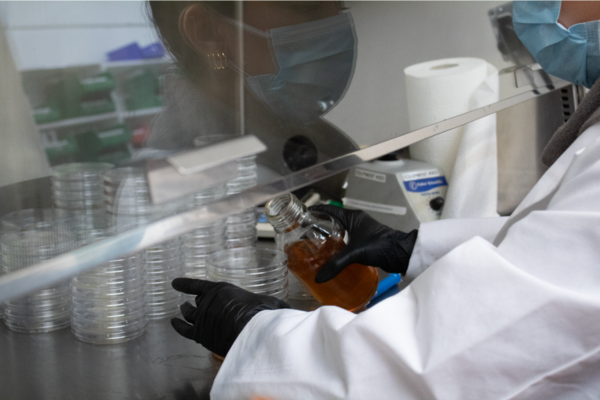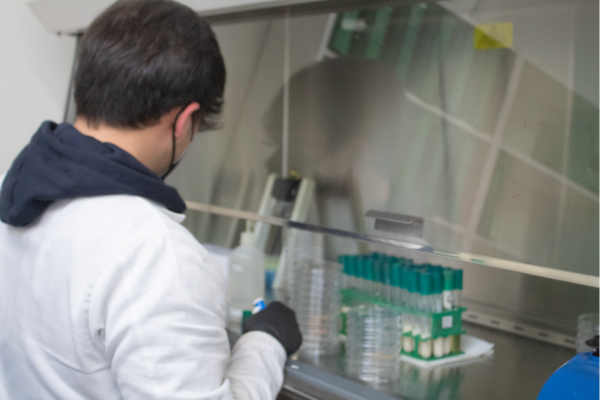Sterility testing and assurance are critical regulatory compliance requirements for 503B facilities that perform sterile compounding according to USP <797>.
Subject to section 503B under the Federal Food, Drug, and Cosmetic (FD&C) Act, 503B facilities manufacture bulk pharmaceuticals or their components for further processing. Compounded drug products provide life-saving alternatives for patients unable to take FDA-approved drugs.
What are the Requirements for USP 797 Sterile Compounding?
The safety requirements for manufacturing bulk pharmaceuticals under Section 503B are no less rigorous than other drug-manufacturing facilities. 503B pharmacies that perform sterile compounding in accordance with USP <797> must be compliant with all requirements of current Good Manufacturing Practices (cGMP) per the U.S. Food and Drug Administration (FDA) 21 CFR 211 for pharmaceuticals.
Because there is no finished product, one of the most challenging aspects of cGMP regulation for 503B facilities is the confirmation and demonstration of safe and stable products through validated sterility testing as well as testing for identity, purity, strength, and expiration dating.

Sterility Testing Methods for USP 797 Sterile Compounding
A product’s sterility is confirmed via testing in aseptic conditions in accordance with USP 71 & USP 797, and FDA’s GMP standards of 21 CFR 211. Two industry-standard methods of sterility testing are used:
- Membrane filtration
- Direct inoculation
Regardless of the method chosen, both processes must be compliant with all applicable guidelines and conducted by qualified personnel trained to reduce any risk of errors.
Membrane Filtration Method
The membrane filtration method is most appropriate for products containing bacteriostatic or fungistatic agents. Samples are passed over a 45-micron filter and rinsed before the introduction of growth media.
Direct Inoculation
Direct inoculation testing is used on non-filterable products such as oils, suspensions and bulk solids. The sample is directly introduced to growth media using aseptic techniques. It is important to note that any samples with antimicrobial properties must first be neutralized before either membrane or direct inoculation sterility tests are run.
Validation Studies Required
Validation studies of terminally sterilized products must be performed at every load size. For drug products not subjected to an overkill terminal sterilization cycle, a demonstration of bioburden limits and measurements is required prior to sterilization. Any finished drug product not terminally sterilized during production must be sterilized immediately before the final product container is filled.
Regardless of a product’s terminal sterilization cycle, it is always good practice to test finished products to provide additional sterility verification.
Even products compounded from sterile starting materials and under cGMPs run the risk of an unexpected and undetected event during the manufacturing process. Regardless of the sterilization method chosen, the strength, purity, quality, and package integrity of the sterile product must be maintained.

Release Sterility Testing of Finished Compounded Products
The pharmaceutical manufacturer’s Quality Control unit maintains responsibility for releasing finished drug products per 21 CFR sections 211.165 and 211.167. These finished drugs are required to be tested prior to distribution and the products may not be released until confirmation that the finished drug product meets specifications.
For sterile drug products, that means testing to ensure the product meets specific limits for bacterial endotoxins and to confirm antimicrobial effectiveness of sterile products labeled as multi-dose. Release testing of sterile products must also include specifications required for nonsterile components like identity and purity of the Active Pharmaceutical Ingredient (API).
Stability Testing’s Role in Expiration and Beyond-Use Dating and In-Use Time
Stability testing is used to establish appropriate storage conditions and determine an expiration and Beyond Use Dating (BUD) that ensures product quality and sterility.
For 503B compounded drugs for which there is no finished good, the establishment of a stability program can be tricky. FDA recommends use of past experience, available literature, and fundamental scientific principles to establish parameters for the stability program, and use of sterility testing to assess the product’s performance against specifications after aging to the desired expiration date.
However, before a product batch can be released, FDA requires two studies:
- A container-closure integrity test must be conducted on samples aged to or beyond the desired BUD or expiration date to ensure that sterility is maintained over time.
- A container-closure specific-antimicrobial-effectiveness test must be conducted on product samples aged to the proposed expiration or BUD that are labeled or intended to be multiple-dose.
It is also important for the health care practitioner who manipulates or administers a bulk compounded drug to know how long the drug product is expected to retain its quality after being manipulated.
Stability studies, as required by 21 CFR 211.166, must be conducted to support the stated in-use time. However, if the sterile product’s stated in-use time is less than 4 hours at room temperature or less than 24 hours refrigerated, FDA will not take regulatory action should stability studies on the constituent parts not be performed.
Outsourcing Your Sterility Testing Requirements
Many 503B pharmacies that perform sterile compounding in accordance with USP <797> outsource their stability and sterility testing needs to independent FDA-registered third-party laboratories qualified to perform such tests.
Using state-of-the-art and validated methods, Certified Laboratories conducts sterility testing for 503B drug compounders in accordance with USP and FDA guidelines to ensure accurate and reliable results. By outsourcing your analytical testing, you can focus on your primary business – creating safe and compliant bulk drug products that meet your customers’ needs.

